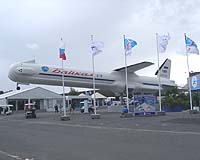By Keith Cowing
on July 20, 2010 10:29 AM
Full Draft Text of House NASA Authorization Legislation
Keith's note: One thing that the House version of the NASA Authorization Act does is to cut further into proposed commercial activity - specifically, CRuSR (Commercial Reusable Suborbital Research).
In this draft House Legislation, funding for CRuSR is cut in FY 2011 and FY 2012 from the President's and Senate's mark at $15M per year year down to just $1M per year, with funding unspecified in later years. In addition, according to the draft language, CRuSR's funding in FY 2011 may not be used to buy flights or build payloads. Instead it can be used only to fund studies.
If you look at Sec. 906 (page 94) you will see that this proposed draft adds onerous restrictions before NASA can spend money on CRuSR, using identical language to restrictions placed on Commercial Crew in the same legislation, e.g., NASA may not proceed with a CRuSR RFP until all indemnification and liability issues are settled and a report has been sent to Congress.
More than 300 researchers and educators, specializing in fields ranging from microgravity and life sciences to astronomy and atmospheric sciences, from all over the U.S. showed up at a conference in February wanting to use this program. It would seem that anti-suborbital research and anti-commercial forces from within and outside of the agency are at work once again. SMD AA Ed Weiler has long been opposed to suborbital research and has clearly been working behind the scenes to take yet another run at killing this sort of activity. Just look where the CRuSR money is going (if the House gets its way): sounding rockets launched out of Wallops.







